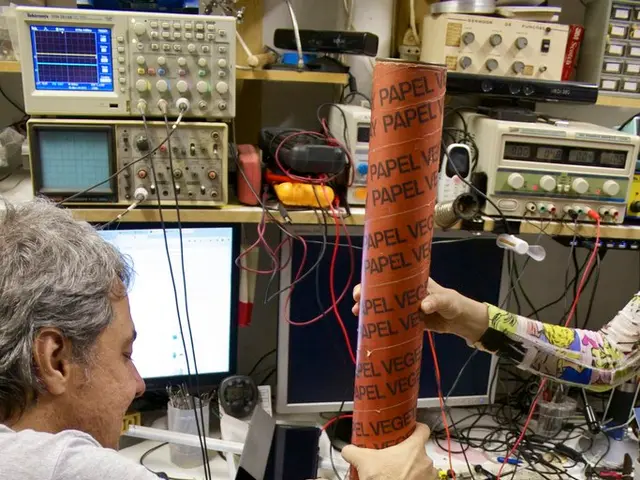Intense Speed Shown by Star within Milky Way, Reaching Approximately 2.3 Million Kilometers Per Hour
The origin of the hypervelocity star J1249+36 remains a captivating enigma in the astronomical world, with two main theories proposed to explain its high speed.
White Dwarf Supernova Scenario
In one scenario, J1249+36 could have been the stellar companion of a white dwarf star. A type Ia supernova could have been triggered if the white dwarf star exceeded the Chandrasekhar limit, resulting in a violent explosion that ejected J1249+36 at high orbital speed. This mechanism is presumed to be rare but can explain hypervelocity stars that are low-mass or subdwarf stars like J1249+36.
Interaction with a Binary Black Hole System Scenario
Another dominant theory for hypervelocity stars involves complex interactions between a star and a binary black hole system. Known as the Hills mechanism, one star in a binary can be captured by the black hole's gravity while the other is ejected at high velocity, effectively slingshotting the star out of the galaxy. This mechanism has been recognized as the dominant source of hypervelocity stars and could potentially apply to J1249+36.
Evidence Supporting These Scenarios
The nature of J1249+36 as a low-mass subdwarf that could be a binary companion remnant supports the supernova origin. On the other hand, its hypervelocity status and trajectory are consistent with ejection mechanisms involving black hole interactions.
The team of researchers plans to examine the elemental composition of J1249+36 to clarify its origin. Simulations have shown that such interactions could place a star on a trajectory similar to J1249+36's.
The Future of J1249+36
J1249+36 is moving at a speed that could potentially free it from the gravitational clutches of the Milky Way. Its discovery offers a unique opportunity to study "hypervelocity" stars and the mechanisms that propel them through the galaxy.
If J1249+36 originated from a globular cluster, as the second scenario suggests, it could reveal clues about its birth. The analyses of J1249+36's infrared spectrum were conducted at the WM Keck Observatory in Maunakea, Hawaii.
The origin of J1249+36's high speed remains mysterious, but the ongoing research promises to unravel the secrets of this enigmatic star and deepen our understanding of the universe.
Science continues to delve into the mysteries of space-and-astronomy with the ongoing research on the hypervelocity star J1249+36. The application of technology, such as simulations and analyses of elemental composition and infrared spectrum, is crucial in understanding the origin of J1249+36, whether it stemmed from a white dwarf supernova scenario or interactions with a binary black hole system.




